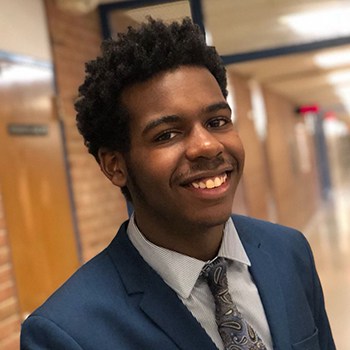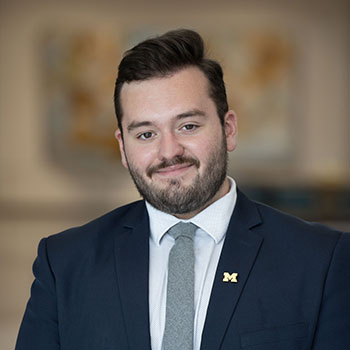
CEE’s Jordon Horton Serves as Student Ambassador at COP27
Attended Climate Change Conference in Egypt

Attended Climate Change Conference in Egypt
CEE Senior Jordon Horton served as a student ambassador to the recent 2022 United Nations Climate Change Conference, known as COP27, from November 14-18 in Sharm El-Sheikh, Egypt. Horton, whose interests are in water, sanitation and hygiene (WASH) in developing countries, described his attendance at this event as the result of “an opportunity that led to another opportunity.”

“This past March, I attended the American Chemical Society (ACS) annual meeting to present some research,” Horton said. “While I was there, I stopped at a fair, where various organizations had displays featuring their activities. The ACS Environmental Division showcased the ambassador program for COP27. I applied, and I was accepted over the summer.” Starting in August, Horton attended meetings and held conversations with technical experts, people who had backgrounds in chemistry and policy, to provide a preview of what ambassadors would experience. “It’s more of a mentorship program, where students experience a collaborative approach in learning,” he said..
According to COP27 information, the primary goal of the student ambassador program is to develop tomorrow’s sustainability leaders through real-world engagement at the epicenter of international climate negotiations. The program sends college and university students to the COPs as UN Accredited ACS Observers. The objective is to use COP as an international platform and social media as a mechanism to engage students and educators in a multipronged climate change dialog. An ACS Student Ambassadors delegation has participated in every COP since the 2010 COP16 in Cancun. Students present outcomes of their COP project in a climate literacy symposium each year at the ACS Spring National Meeting. The rationale for this COP Project is embedded in the ACS Climate Change Policy Statement recommendation to “promote climate science literacy and education for citizens and policymakers about human impacts on climate, and the consequences of climate change.”
Horton said different pavilions focused on specific issues. For example, the Green Zone offered general sessions, and the Blue Zone hosted governmental pavilions. There was a water pavilion, a pavilion about agriculture and food security, and others highlighting additional public policy matters.
While at the conference, student ambassadors developed an abstract for future research. Horton’s abstract focused on water sanitation and hygiene. “I am working on my undergrad degree spotlighting this issue,” he said. It felt like a great tie-in to my current coursework and future career.”
Horton said that attending the conference provided him with unique insights into the role of public policy discussions and how they affect ways nations address climate change challenges. “I had anticipated that there would be more technical information discussed,” Horton said. “There were a lot of conversations on the policy front, dealing with social issues and public health. It was interesting to see how all of these topics are linked and how the work I do as an engineer is ultimately tied down the road to the funding for countries to adapt to climate change”
Horton said the conference was an inspiring experience. “Toward the end of the session, I went to a youth gathering. Seeing us all collected there reinforced the realization of how many young people have a direct stake and interest in the future, and how we are coming together to have a voice in policy decisions that will affect our lives.”
Currently, Horton is researching plasma-based water disinfection for implications in water reuse trains. Outside of engineering, he enjoys community engagement through diversity, equity and inclusion work on campus, traveling, cooking and spending time with friends.

Marketing Communications Specialist
Department of Civil and Environmental Engineering